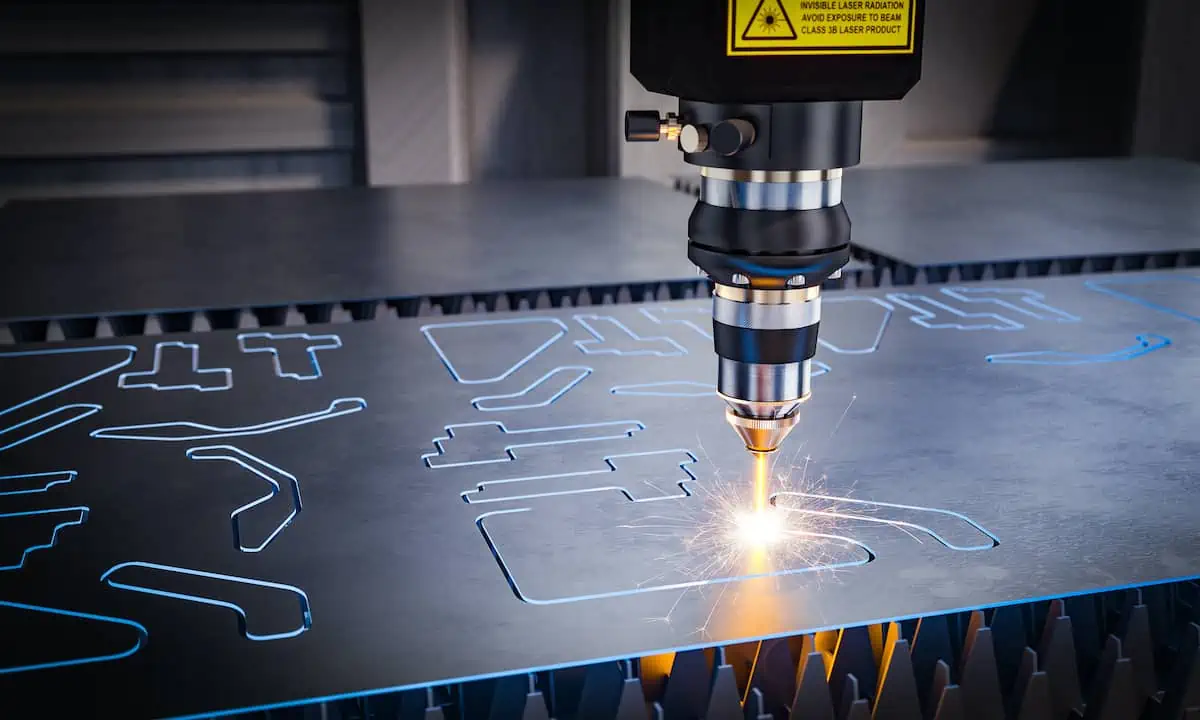Done with precise and cutting-edge tools, metal fabrication is an important process in many industries. Laser cutting has become one of the most popular metal fabrication methods due to its accuracy, speed, and cost-effectiveness.
This article will explore the benefits of laser cutting technology in metal fabrication processes.
What is Steel Laser Cutting?
Metal laser cutting is a process used in metal fabrication where high-power laser beams are directed onto the material to be cut. The beam melts, burns, and vaporizes away parts of the material, which separate it into two or more pieces.
This method has been widely adopted due to its precision and accuracy compared to other methods, such as sawing, grinding, and shearing.
Importance Of Laser Cutting In Metalworking
Steel laser cutting process offers numerous benefits to manufacturers looking to optimize their production process. By investing in this advanced technology, companies can stay competitive while enjoying all its advantages.
Here are the advantages of this type of process:
1. Cost-Effectiveness
Laser cutting is an invaluable tool in metal fabrication processes. It offers a level of accuracy like no other method. With laser cutting, complex shapes can be cut quickly, precisely, and cost-effectively with minimal waste material. Here are some key benefits to consider when using laser cutting:
- Laser cutting reduces the need for expensive secondary operations such as reaming or drilling due to its high levels of accuracy.
- The process is fast and flexible—it can easily switch between different thicknesses and types of materials while still delivering accurate cuts.
- Costs are kept low since only a small amount of energy is required per cut, and there is a little-to-no waste material produced from the process.
- It doesn’t require additional setup time compared to traditional mechanical methods, making it much more efficient than competing technologies.
Laser cutting provides manufacturers with an effective way to produce flawless parts with increased efficiency, reduced costs, and minimal environmental impact. Undoubtedly, this technology has revolutionized modern metal fabrication processes for the better.
2. Precision
The precise and accurate nature of laser cutting has revolutionized metal fabrication. It can cut intricate shapes with exact measurements, eliminating the need for manual grinding or hand-reworking. The edge quality produced by a laser cutter is superior. Edges are crisp and clean without any burrs, saving time on different polishing processes.
The precision offered by this technology can be attributed to its ability to focus its beam in one place precisely. This allows it to melt and vaporize material in even the tightest spaces accurately. Laser cutters allow manufacturers to create products that were once impossible using traditional methods like saws and drills.
3. Speed
Moving from precision to speed, laser cutting is an incredibly efficient and cost-effective way of metal fabrication. It can cut through tougher materials with ease and accuracy, so it’s perfect for any job that requires a high level of detail in its final product. Here are some benefits of using this process:
- Laser cutting produces fewer deformities than traditional methods like sawing, drilling, or milling.
- Its precise nature allows complicated designs to be created quickly, saving time and money.
- The heat generated during the cutting process helps to reduce distortion when fabricating intricate parts.
- Since lasers focus on small areas at a time rather than large swaths as traditional tools do, they produce less waste material.
- Lasers require minimal maintenance compared to other techniques, requiring frequent replacements of consumable components such as blades or drill bits.
With its ability to create highly detailed products without sacrificing quality or accuracy combined with rapid turnaround times, there’s no doubt why laser cutting has become such a popular method for metal fabrication today.
4. Versatility
The flexibility provided by laser cutting makes it ideal for many applications, such as creating complex curved parts or holes in sheet metals. This means that manufacturers can access more options when designing their products, which leads to greater innovation potential. Additionally, because lasers are computer-controlled, they can be programmed quickly and easily, making them faster than manual operations like drilling or punching.
This versatility extends beyond simple cuts – laser marking capabilities allow companies to create permanent product markings without damaging the material’s surface. This helps ensure product traceability and quality control while maintaining aesthetic appeal.
5. Environmentally Friendly
The glowing red beam of light pierces through the metal, sending sparks and smoke flying into the air. It’s an impressive sight, but it isn’t just for show. Laser cutting is a highly efficient and accurate method of metal fabrication that offers numerous benefits over more traditional methods. Not only does it save time and money, but it also has environmental advantages that make it ideal for modern manufacturing processes.
Laser cutting requires significantly less energy than other forms of metal cutting, such as oxy-fuel or plasma torch cutting. This means fewer emissions are released into the atmosphere during production, making laser cutters much more eco-friendly.
In addition, laser cutters can be used with non-hazardous materials like mild steel and aluminum, which produce minimal waste compared to hazardous metals like copper or nickel alloys. As a result, there is a reduced risk of contamination from hazardous metals in the environment surrounding the factory where they are being produced.
Conclusion
Laser cutting is an invaluable tool in the metalworking industry. Its cost-effectiveness, precision, speed, and versatility make it a great choice for businesses that want to stay competitive. It’s also environmentally friendly and safer than other methods of fabrication.
For these reasons, laser cutting has become the go-to method for many professionals in the field. Its advantages will continue to be realized by those who use it in their operations. Companies should take advantage of this powerful technology to remain at the top of their game.

